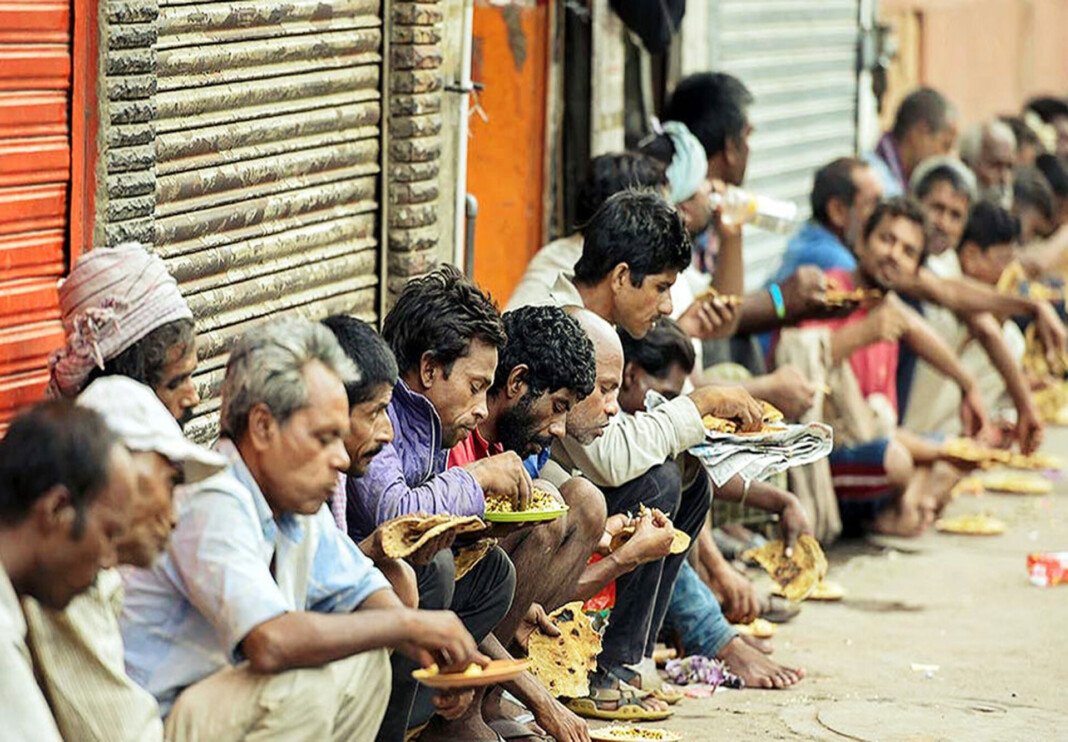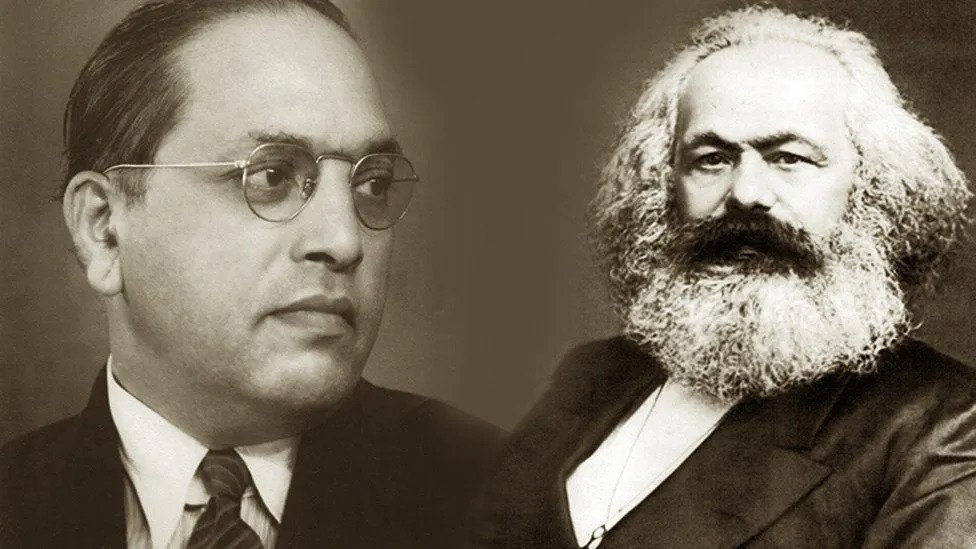By: Prabhat Patnaik
One of the striking findings of the Bihar Caste Survey, which bears out what the Left has been asserting for a long time, is that absolute poverty in the country is far more pervasive than what successive governments in India have been claiming. It shows that 34.1per cent of Bihar’s population has a monthly household income of Rs 6,000 or less. This benchmark figure of Rs 6000 per month corresponds to what the official “poverty line” itself should be on the government’s own criterion, though these days the government has stopped talking about the poverty line altogether; it has adopted instead the concept of “multi-dimensional poverty” propagated by some international organisations which shows only 15 per cent of the country’s population in poverty! Bihar, it is true, does not represent the country as a whole, but the Bihar Survey figure is so large that the pervasiveness of poverty in the country cannot be denied.
The rationale for taking Rs 6,000 as the benchmark arises for the following reason. For 2011-12, the Tendulkar Committee which had been appointed by the government had recommended a poverty line of Rs 29 per day for rural India. If we take the Consumer Price Index for Agricultural Labourers, then between 2011-12 and 2021-22 there has been a rise in this index of 77.5 per cent, which would make the corresponding poverty-line for 2021-22 equal to Rs 51.475; for a family of four, this works out to a monthly figure of Rs 6177. A monthly income of Rs 6000 therefore appears perfectly justified, on the government’s own criterion, as the benchmark figure for rural poverty.
The benchmark figure for urban poverty is of course much higher. In looking at the prevalence of poverty in the population as a whole, including its urban and rural components, taking a uniform benchmark of Rs 6,000 per month therefore grossly underestimates the magnitude of poverty. Nonetheless, we apply a uniform benchmark of Rs 6,000 per month quite deliberately to the data in order to ensure that nobody can accuse us of exaggerating the magnitude of poverty.
Even the benchmark of Rs 6,000 per month, however, while being inconformity with official criterion, is not really an appropriate one. The Tendulkar Committee was an officially appointed committee that was bound to respect official sensibilities in suggesting a poverty line. But we can approach the problem differently. The Planning Commission had originally accepted 2200 calories per person per day as the benchmark for poverty in rural India. If we look at the National Sample Survey figures on the per capita expenditure level at which exactly 2200 calories were accessed in rural India, then that works out to Rs 70 in 2017-18. For a family of four persons, this amounts to Rs 8400 per month.
Between 2017-18 and 2021-22, there has been a 21 per cent increase in the Agricultural Labourers Price Index, so that the monthly household expenditure for a family of four that should define the benchmark for poverty in rural India in 2021-22, is Rs 10,164. At the very least therefore we should take Rs 10,000 as the benchmark level of household income for defining rural poverty. The income level for defining urban poverty should be much higher; but let us deliberately apply a uniform benchmark for both urban and rural household incomes, so that no scope can possibly exist for anyone to accuse us of exaggeration.
If we take this benchmark, then we find according to the Bihar Caste Survey that 63.74 per cent, or 64 percent in round figures, was below this benchmark. The idea that as much as 64 per cent of the population at the very least was steeped in absolute poverty is an amazing finding for a major state of India in the year 2022-23. Official spokesmen keep emphasizing growth in GDP as if that ipso facto solves all the economic problems of the country; in fact the government even keeps proclaiming its vision of achieving a $5 trillion economy as the ultimate feather in its cap. But behind all this talk of GDP growth lies the appalling fact, if we extrapolate from Bihar to the country as a whole, that two-thirds of the population lives in absolute poverty.
Of course, a glimpse of this appalling reality was already evident from a number of other indicators, especially from the Global Hunger Index that placed India at the 111th position among a total of 125 countries; but every such indicator was dismissed by the government as being inconsequential. The fact that even a survey, conducted for an altogether different purpose, namely to ascertain the caste-wise distribution of the population, has also found the pervasiveness of deprivation and poverty in the country, re-affirms this dismal reality.
This dismal reality exposes in particular the utter vacuity, indeed the utter tendentiousness, of the BJP’s position on the economy. The fact that the BJP is a party upholding the interests of monopoly capitalists, especially of crony monopoly capitalists, has been clear to all; indeed all fascistic outfits have this feature. But this position is sought to be justified by the BJP with the argument that GDP growth is of paramount importance for the Indian economy, and that such growth can be ushered in only by the capitalists, especially the monopoly capitalists; for this they have to be given all facilities from the government, including incentives in the form of transfers. The “nation’s interests” therefore are made identical with the interests of the monopoly capitalists through an emphasis on GDP growth. The fact that India’s GDP growth which the government claims to be the highest among the major economies of the world, still leaves two-thirds of the population in absolute poverty, underscores both the vacuity and the tendentiousness of BJP’s argument.
But then, it may be asked, what about the findings of the multidimensional poverty index? That index however is based on an intellectual confusion. Every mode of production has the poor within it acting in a particular way; hence every mode of production must have its own criteria for identifying poverty. Poverty under feudalism for instance takes the specific form of children being starved, left uneducated, and intensively exploited by being forced to join the work-force. Poverty under capitalism on the other hand, especially under advanced capitalism, takes the specific form not of children being forced to work, but of their having to access poor schools, poor healthcare facilities, living with dilapidated furniture and run-down gadgets in squalid surroundings, and being pushed into crime; the link between poverty and crime is particularly strong under advanced capitalism, which is one reason why any survey on poverty which obviously would not cover jail inmates remains unsatisfactory.
To define poverty in terms of, say, whether children go to school or not, would make sense in a feudal society, but not in an advanced capitalist society where they may be going to schools, but schools of extremely poor quality. The criteria for identifying poverty in short would have to differ from one mode of production to another. And if we have to have one criteria to cover all forms of poverty, especially in a society like ours where we have an amalgam of different modes of production, then that has to be the level of income.
Income itself however is not an easy concept to measure, which is why some easily measurable proxy for it has to be found; and the level of nutrition, apart from being important in itself, is one such proxy. Whether we look at poverty within a feudal setting, or poverty within an advanced capitalist setting, we find that the poor are invariably undernourished, even though in one case they may be joining the work-force at a very early age, while in the other they may be going to poor-quality schools. The problem with the multidimensional poverty index is that it gives a very low weight to nutrition (and also takes a poor approximation to it such as the body mass index); and at the same time it takes a number of other measures such as school attendance, and access to gadgets as signifying the absence of poverty while they only signify at best a transition from feudal poverty to capitalist poverty.
It is on the basis of this utterly dubious multidimensional poverty measure that the BJP government has been claiming that GDP growth leads to an automatic elimination of poverty. The findings of the Bihar Caste Census should be an eye-opener for all those who have been taken in by such government propaganda. (IPA Service)







